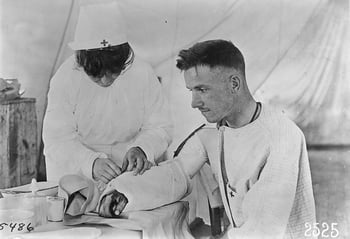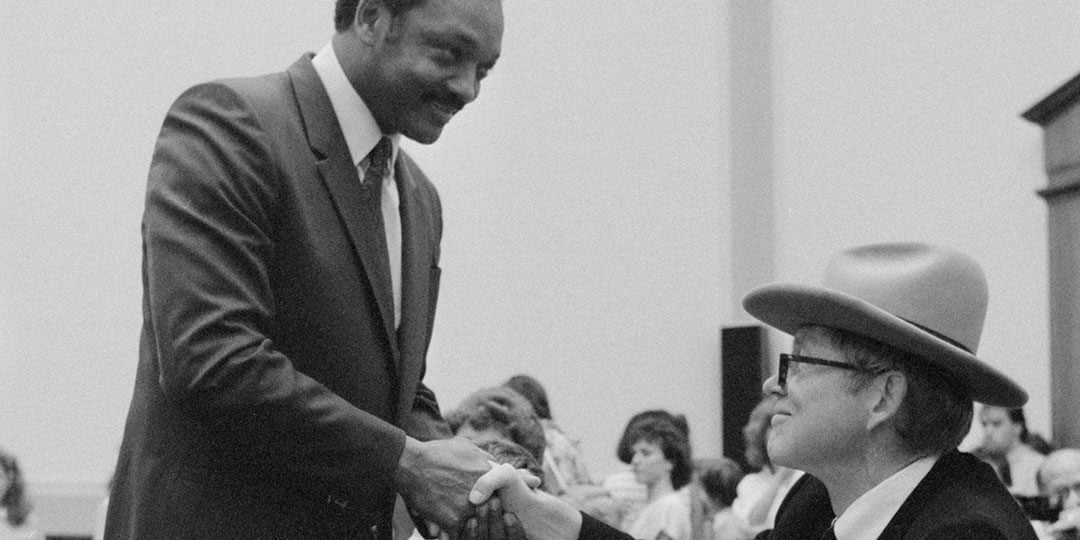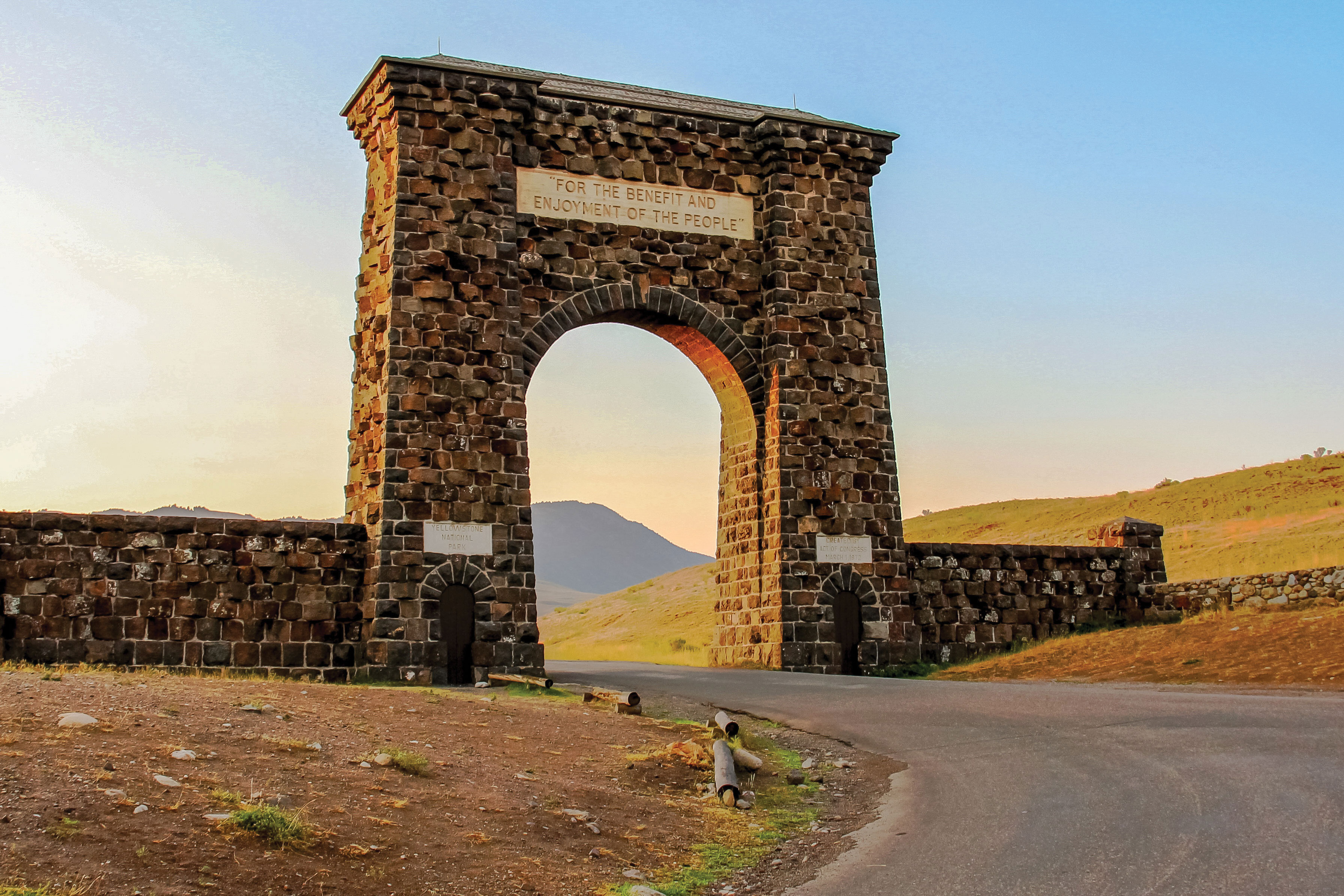July is Disability Pride Month. During this month we honor the disability community’s history,...
“Thank You for Your Service”: America’s Checkered History with US Veterans
“Thank you for your service!” Many Americans say this automatically when meeting US military veterans. It’s a good expression of gratitude to those willing to sacrifice their time and even lives to protect the United States.
But the practice of automatically giving veterans the full respect they deserve is fairly recent. History shows that the US government has a complex and checkered history in its treatment of veterans.
The First American Veterans
You probably know the American War for Independence began in 1775, after American farmers and British soldiers exchanged gunfire in Lexington, Massachusetts.
Less well known is that there was no “United States” then, because independence was not declared until the following year. When the war began, American leaders had yet to formally declare independence and organize a government. One of their first challenges was to encourage men to volunteer for the new American military. As a way to entice recruits, the Continental Congress promised pensions, or payments, for disabled soldiers and others.
At first, only white Americans were allowed to join the military. Later in the war, George Washington reluctantly allowed free and enslaved Black men to fight for the Continental Army. Many of the enslaved soldiers did so with the promise that they would remain free after the war was over.
Would US leaders make good on all these promises? Yes and no. The new US government did not deliver promised money to the war’s veterans in a timely way. Of about 250,000 American soldiers, only 3,000 got pensions in its early days. Instead, veterans were promised payments that would not come for years.
As for the enslaved Black soldiers, many of them were freed. However, they never received other payment or other benefits. For them, “freedom” was considered payment enough.
The most unfortunate Black soldiers were simply enslaved again after the war, despite the earlier promises. For example, James Robinson was born into slavery in Maryland. When his slaveholder joined the Patriots, he brought Robinson along into the service.
Robinson fought so bravely against the British, the Marquis de Lafayette reportedly awarded him a gold medal of honor. Yet after the war, Robinson was sent back into slavery. He was later promised freedom if he fought in the War of 1812. Again, Robinson did, and again he was denied freedom after the war.
A New Rebellion
In 1779, some military officers began asking for “half-pay for life.” This led to a public outcry, as many Americans thought that paying pensions like this amounted to government “giveaways.”
At the same time, the new nation’s economy was stumbling. To raise money, state governments were taxing farmers more and more, and the farmers were often veterans. Failing to pay these taxes could lead to imprisonment or government seizure seizure of land. For veterans, this was infuriating. While Congress gave them notes promising future payment, these notes could not be used to pay tax debts.
An armed group of veterans organized to protest in Massachusetts in 1786. They were led by a former Revolutionary War captain named Daniel Shays. About 1,000 angry ex-soldiers stormed a courthouse to stop the court from taking more land from farmers. This kind of protest was similar to the methods that Americans had earlier used against unpopular British policies.
Alarmed by the uprising, the state governor sent 3,000 militia men to stop Shays’ Rebellion. More than a thousand protesters were arrested, and its leaders were captured and jailed. This rebellion frightened American leaders who worried that angry farmers and veterans might rebel in other states. George Washington wrote: “We are fast verging to anarchy and confusion!”
As for Daniel Shays, he was sentenced to death, but pardoned two years later.
The Civil War
The US government continued to struggle with how to treat veterans in the 1800s. For example, if a soldier died in battle, his surviving family did not receive any benefits. This didn’t change until 1858, when Congress authorized half-pay pensions to veterans’ widows and their children.
Shots were fired in the Civil War shortly afterward. More than 620,000 soldiers died in the war, a toll almost impossible to imagine today. There were so many dead, Congress authorized the president to begin buying land for national cemeteries.
As with the War for Independence, white Union leaders did not want to use Black soldiers. Harry Jarvis was an enslaved man from Virginia who escaped and volunteered to fight for the Union army. He later recalled that General Benjamin F. Butler said “it wasn’t a black man’s war. I told him it would be a black man’s war before they got through.”
Jarvis was right: Nearly 200,000 Black men enlisted for service in the Civil War, and about a third of them died.
After the war, the government provided injured and disabled Union veterans with medical care at hospitals or long-term care at facilities known as veterans’ homes. These were open to Union soldiers, Black or white, who fought for the Union Army. There were also pensions for Union veterans.
However, Confederate veterans got nothing from the federal government.
Postwar Problems
Yet the idea of thanking veterans for their service by paying them still rubbed some Americans the wrong way. And pensions were expensive. By the end of the Civil War, well over a million veterans were collecting pensions. This money made up about a third of the federal government’s budget. Meanwhile, it took until 1870 to bury nearly 300,000 dead Union soldiers in the new national cemeteries.
For some Black soldiers, the war never really ended. From about 1877 to 1950, there was a violent white backlash against Blacks across the South. More than 4,000 Blacks were lynched, and no group was at greater risk of being victimized by racial violence than Black veterans. If a Black soldier wore his uniform, that was often enough to “provoke” attacks by whites. (This was still true after both World War I and World War II.)
Tombstone Bonuses
In 1917, Congress established a new system of veterans’ benefits. It included disability payments and military insurance. Yet at the same time, white Southern politicians were trying to block Blacks from enlisting in the military. Mississippi Senator James K. Vardaman warned that Black veterans would “inevitably lead to disaster.” He said that after they defended the United States, Black veterans would return home and insist that their “political rights must be respected.”
American veterans of World War I saw the worst horrors that the world had yet known. These included machine guns, trench warfare, and chemical weapons. For the first time, soldiers were diagnosed with “shell shock”: a deep psychological and physical disturbance caused by exposure to explosions and bombardment.
A federal health care system was created with the goal of “rehabilitating” injured soldiers for civilian lives and jobs. These programs were combined to form what became known as the Veterans Administration. (Now called the Department of Veterans Affairs, it’s still called VA.)
In 1924, Congress promised America’s World War I veterans cash bonuses. The catch was that they couldn’t collect the bonuses until 1945!
Veterans were shocked. They called the delayed payment a “Tombstone Bonus” because the only way to get the money early was by dying, when the money was then given to the family.
After the Great Depression started in 1929, one in four Americans were out of work. Unemployed veterans had to rely on charities for food and shelter. So some veterans began demanding their “tombstone bonuses” immediately.
The Bonus Army
At the end of 1931, about 20,000 veterans and their families headed to Washington, DC, to protest the bonus policy and ask for payment. They became known as the Bonus Army.
The veterans gathered peacefully, gave speeches on the steps of government buildings, and built makeshift camps, called “Hoovervilles,” to live in. At this time, the US military was segregated, with Black and white soldiers and officers serving separately. Yet the Bonus Army was voluntarily integrated integrated. Both whites and Blacks lived together in their camps. They also marched side-by-side in demonstrations.
Some people saw the Bonus Army as a group of patriotic veterans who were out of luck, out of work, and in need of help.
Others saw a communist plot. President Herbert Hoover ordered the US Army to disperse the veterans. Military tanks rolled into the capital. Soldiers put on gas masks and fixed bayonets. Troops on horseback got into formation.
Some of the veterans assumed this was a parade in their honor. It wasn’t. The cavalry galloped forward. Hundreds of people were injured by tear gas, swords, and bayonets. At one Bonus Army camp, tanks rolled over shacks, and another camp was set on fire. Two men were shot and killed, and the veterans were forced out of Washington, DC.
There was a final bitter twist of irony. At least one of the families of the two men who were killed then received the “tombstone bonus” the veterans had been demanding in the first place.
The sight of poor, unarmed veterans driven out of the capital by US tanks was a public relations public relations disaster. Franklin D. Roosevelt was elected president that same year, and Congress later approved the veterans’ bonuses.
Respect after World War II
The nation’s attitude toward veterans transformed over time. After World War II ended in 1945, white US troops returned home to far better treatment than previous veterans. The most important aspect of this was the “GI Bill” of 1944. Through it, veterans received benefits that included free or low-cost health care, retirement plans, money for education, and business loans. But while the GI Bill technically gave the exact same aid to whites and Blacks, it was written in such a way that Blacks did not get equal benefits.
The GI Bill had a major impact on US construction, education, and jobs. Private industry also profited. From 1945 to 1966, one in five family homes built in the United States were paid for by GI Bill loans.
From the War for Independence to today, veterans have made the ultimate sacrifice for the United States. It literally took hundreds of years to get to where we are now, but Americans have learned how to truly say: “Thank you for your service.”
This story is excerpted from The Issue: Season 1, Volume 1. If you would like to receive a Veteran’s Day lesson plan, please subscribe to our newsletter.



